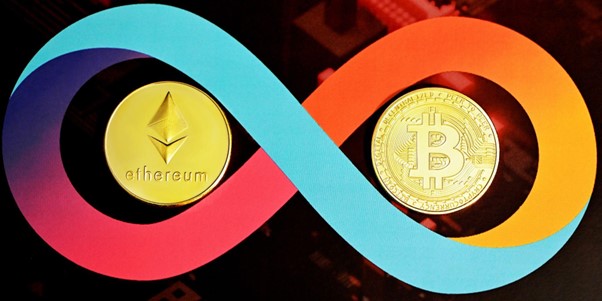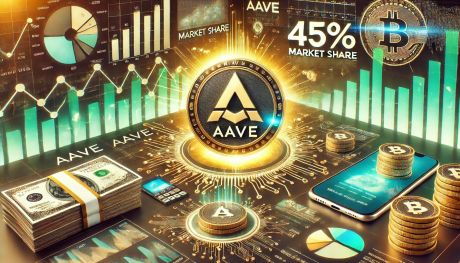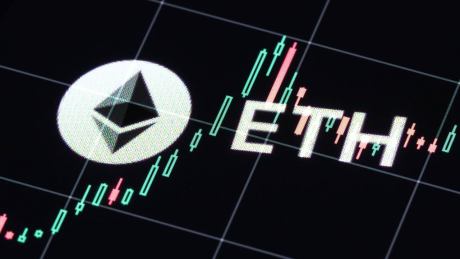The Crypto Space has been abuzz with the launch of a new cryptocurrency known as Vertochain (VERT). Although it has not been launched yet, this new cryptocurrency boasts several features to offer crypto users and enthusiasts who purchase it. In addition, it also intends to provide several benefits common to older cryptocurrencies like Near Protocol (NEAR) and Avalanche (AVAX).
It’s Looking Green
Vertochain (VERT) is a new cryptocurrency that aims to provide solutions to the shortcomings associated with decentralized finance (DeFi) and contribute to the future of the world’s financial market by contributing to its decentralization.
Vertochain (VERT) is a platform that prioritizes Blockchain scalability by allowing peer-to-peer trading, exchange, and swapping of digital assets across five major blockchains: Binace Smart Chain (BSC), Avalanche (AVAX), Tezos (XTZ), Ethereum (ETH), and Solana (SOL). By importing scalability, Vertochain aims to enable its users’ access and use of cryptocurrencies and digital assets throughout and across blockchain networks and hasten the adoption of these cryptocurrencies and digital assets across the globe.
Features of the Vertochain Platform
There are several features associated with the Vertochain (VERT) platform however, three of those features stand out, and they include yield farming, liquidity provision, and multi-chain farming. These features will allow the complete democratization of power among users of the Vertochain (VERT) platform and allow these users to have a say on how the platform is run, operated, and managed. In addition, the users will also be allowed to suggest possible changes to improve the Vertochain (VERT) platform.
The Vertochain Tokenomics
VERT is the native cryptocurrency token that powers the Vertochain (VERT) platform. The token will have a total maximum supply of 500 million tokens of which:#
- 30% will be offered up for sale during the token’s presale,
- 25% will be utilized as liquidity on the Vertochain (VERT) platform,
- 20% will be utilized as Multi-chain deployment,
- 20% will be given as rewards on the Vertochain (VERT) platform, and
- the remaining 5% will be used to find the Vertochain (VERT) team.
Not too far From Success
Created by Alex Skidanov and Illia Polosukhin, Near Protocol (NEAR) is a blockchain network that intends to provide its users with decentralized features uncommon to other blockchain networks like Bitcoin (BTC). It is a computer network regulating a platform for creators and developers of decentralized services to create and launch these services.
The Near Protocol Features
The Near Protocol (NEAR) prioritizes the creation of scalability between several blockchain networks by including special decentralized applications (dApps) such as the Rainbow Bridge, which was created to allow participants and users of the Near Protocol (NEAR) to transfer Ethereum tokens between Ethereum and the Near Protocol (NEAR) with ease.
Another feature of the Near Protocol is a Layer 2 scaling solution built on its Aurora network. Aurora was developed using Ethereum’s technology known as the Ethereum Virtual Machine (EVM) to enable decentralized creators and developers to launch Ethereum-based decentralized applications (dApps) on the Near Protocol (NEAR) network. These creators and developers can use the Aurora feature to access the low transaction fees and high throughput advantages of Near Protocol (NEAR). In addition, the developers and creators will also enjoy the familiarity and network of decentralized applications of the Ethereum (ETH) blockchain.
The Near Protocol (NEAR) also possesses another feature called Nightshade. Nightshade is a special variation of sharding where individual operating sets of participating validator nodes process transactions in parallel across multiple sharded chains, thus, improving the general capacity of the Near Protocol (NEAR) network. In addition, Nightshade enables the Near Protocol (NEAR) to maintain a singular chain of data at the same time while distributing the computing and processing needed to maintain this data into small fractions of the transaction blocks called “chunks.”
Unlike regular sharding, Nightshade shards allow processing a greater amount of transactions every second and cheaper transaction fees, thereby allowing the blockchain to scale more efficiently.
Tokenomics
The NEAR token is the native official token that powers the Near Protocol (NEAR). The token has a maximum supply of 1 billion tokens of which 719 million are currently in circulation. The total supply of the NEAR tokens is allocated as follows:
- 2% is utilized as community grants.
- 4% is utilized as community grants.
- 10% is utilized as foundation endowments.
- 14% is granted to the core contributors to the Neat Protocol (NEAR).
- 7% is utilized to build the early ecosystem of the Near Protocol (NEAR)
- 6% is allocated to the network’s backers.
- The network’s small backers utilize 6.1%.
- 12% is offered for sale during the NEAR token’s community sale.
Although it serves a variety of use cases, the NEAR token is majorly used as a means of processing transactions and storing data on the Near Protocols (NEAR), utilized to run operational validator nodes on the Near Protocol (NEAR) by staking the NEAR tokens and granting its holders governance rights that will enable them to take part in the decision-making processes that involve the allocation of resources on the Near Protocol (NEAR).
A Mountain or a Molehill?
Popularly regarded as one of the fastest blockchain networks in the blockchain industry today, Avalanche (AVAX) is an open-source, decentralized and eco-friendly smart contract-enabled platform that supports the execution of decentralized smart contracts and decentralized applications (dApps).

The Avalanche (AVAX) Mechanism of Operation
Like Ethereum (ETH), Avalanche (AVAX) also allows the execution and running of decentralized applications (dApps) since its smart contracts are written in the same programming language used by Ethereum (ETH) known as Solidity.
The Avalanche (AVAX) platform’s mission is centered around achieving three main objectives: scalability, decentralization, and security. The platform intends to do this by utilizing its Proof-of-Stake (PoS) consensus mechanism. The Proof-of-Stake (PoS) consensus mechanism allows the Avalanche (AVAX) platform to maintain its security and validate transactions performed on its network.
The Avalanche (AVAX) protocol aims to solve the problems limiting blockchain technology by utilizing three different blockchains. These blockchains include:
- The Exchange Chain (X-Chain): This is the main default blockchain of the Avalanche (AVAX) ecosystem where digital assets are developed and exchanged. AVAX, the native utility token that powers the Avalanche (AVAX) platform is one of these digital assets.
- The Contract Chain (C-Chain): This chain allows the development, creation, and execution of smart contracts. This chain enables Avalanche’s (AVAX) smart contracts to take advantage of cross-chain interoperability since the Avalanche (AVAX) platform is based on the Ethereum Virtual Machine (EVM).
- The Platform Chain (P-Chain): This chain is responsible for coordinating individual validators and nodes and allows and enables the creation, operation, and management of subnets.
The AVAX Token
Transactions performed on the Avalanche (AVAX) platform are powered by its official native utility and governance token known as AVAX. The AVAX token is a hard-capped scarce token with a total maximum supply of 720 million AVAX coins, half distributed during the Avalanche platform’s launch in 2020. There are currently 281 million AVAX tokens in circulation.
The AVAX token is used to pay for transaction, gas, and tax fees on the Avalanche platform, secure the platform via staking, interact with the Avalanche smart contracts and provide a unit of account between the several subnets created on the Avalanche (AVAX) network.
How to buy the VERT token
Currently in its presale phase, the VERT token will be available for purchase on various centralized exchanges (CEXs) and decentralized exchanges (DEXs). Users who purchase the VERT token using Ethereum (ETH) or Binance Coin (BNB) will receive a 9% and 10% bonus, respectively.
Disclaimer: This is a paid release. The statements, views and opinions expressed in this column are solely those of the content provider and do not necessarily represent those of NewsBTC. NewsBTC does not guarantee the accuracy or timeliness of information available in such content. Do your research and invest at your own risk.























